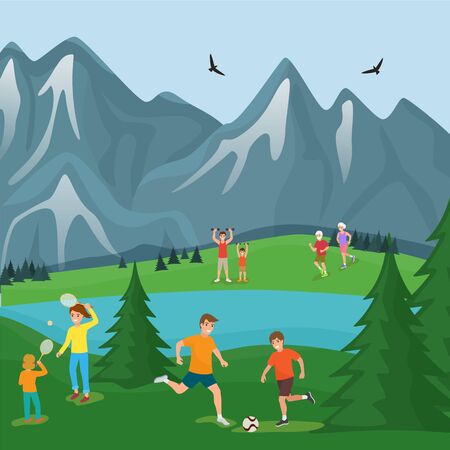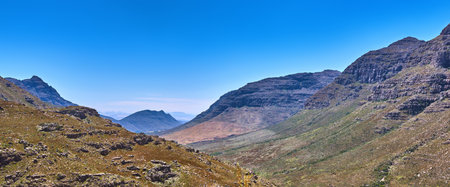Introduction to Wild Camping in the Scottish Highlands
Wild camping in the Scottish Highlands is a rite of passage for outdoor enthusiasts, promising rugged landscapes, shifting weather, and an unparalleled sense of freedom. Unlike most places in the UK, Scotland’s unique approach to land access is enshrined in the Land Reform (Scotland) Act 2003, which grants the public broad rights to roam and camp responsibly on most unenclosed land. This right comes with a strong emphasis on respect—both for nature and for local communities. Following the Scottish Outdoor Access Code is essential: pitch your tent away from homes and roads, leave no trace, and avoid disturbing wildlife or livestock. The Highlands themselves are legendary for their raw beauty—towering Munros, mirror-like lochs, and glens steeped in mist. This wild terrain draws adventurers year-round, each season offering different challenges and rewards. Whether you’re chasing golden sunsets over Rannoch Moor or waking to the call of curlews on a remote shore, wild camping here isn’t just about sleeping outdoors; it’s about embracing a heritage of self-reliance, respect, and awe for one of Britain’s last true wildernesses.
Seasonal Weather Patterns and their Impact
Understanding the seasonal weather patterns in the Scottish Highlands is crucial for anyone considering wild camping. The Highlands are notorious for their unpredictable climate, and each season brings its own set of challenges and rewards. To plan effectively, it’s essential to consider daylight hours, temperature swings, precipitation levels, and how these elements influence your safety and comfort while camping.
Spring (March to May)
Spring in the Highlands is marked by increasing daylight and gradually warming temperatures. However, weather remains highly variable—sunshine can quickly turn to hail or rain. Daytime highs range from 7°C to 13°C, with nights often dipping close to freezing in March. Rainfall is moderate but persistent, so waterproof gear is a must. Early spring also means fewer midges, making it a more comfortable time for wild camping.
Summer (June to August)
Summer offers the longest days, with daylight stretching up to 18 hours around the solstice. Temperatures are generally mild, between 13°C and 19°C during the day, but can feel cooler due to wind and rain. This is peak midge season; biting insects thrive in warm, damp conditions—bring effective repellent or consider a head net. While rainfall remains frequent, trails and campsites are at their busiest due to school holidays.
Autumn (September to November)
Autumn brings shorter days and a drop in temperatures, ranging from 6°C to 14°C. The scenery transforms with stunning golden hues across the hillsides. Rain increases through October and November, and early frosts are possible by late autumn. Wildlife activity peaks as deer rutting season begins—a unique experience but one that requires heightened awareness when selecting campsites.
Winter (December to February)
Winter is only for the most prepared and experienced campers. Daylight dwindles to as little as six hours per day, temperatures frequently fall below freezing, and snow or sleet is common at higher elevations. Storms can sweep in rapidly, making navigation and shelter critical skills. While solitude is guaranteed, conditions can be harsh—only attempt winter wild camping if you’re well-equipped and confident in cold-weather survival.
Highland Weather Overview by Season
| Season | Daylight Hours | Average Temp (°C) | Main Hazards |
|---|---|---|---|
| Spring | 10-16 | 7-13 | Unpredictable showers; cold nights |
| Summer | 15-18 | 13-19 | Midges; heavy rain; crowded trails |
| Autumn | 7-13 | 6-14 | Cooled air; increased rainfall; rutting stags |
| Winter | 6-8 | -1–7 | Snow/ice; short days; severe storms |
Tactical Advice for Wild Campers
No matter the season, always check mountain forecasts before heading out. Prepare for rapid shifts in weather—even summer nights can turn chilly without warning. Choose your kit wisely: layered clothing, reliable waterproofs, sturdy boots, and a four-season tent are non-negotiables if you want to thrive instead of merely survive in the wild Scottish Highlands.

3. Wildlife Encounters and Conservation
When you pitch your tent in the Scottish Highlands, you’re stepping right into the heart of a wild ecosystem teeming with life. The time of year dramatically shapes the wildlife you’ll encounter, so it pays to know what’s about—and how to respect it. In spring, red deer start appearing on lower ground, often seen grazing at dawn and dusk. Roe deer are also more active, especially in sheltered glens. Early summer brings an explosion of birdlife: keep your eyes peeled for golden eagles soaring above the ridges and ospreys fishing in lochs. If you’re lucky, you might even spot capercaillie or black grouse displaying in the forests. Of course, every seasoned wild camper knows about the infamous Highland midge—these tiny biting insects peak from late May through August, particularly after rain and around water. Pack a midge net and repellent; trust us, it’s essential kit. By autumn, stags are rutting—a dramatic spectacle best enjoyed from a respectful distance. This season also sees flocks of migrating geese overhead and red squirrels busy gathering food in ancient Caledonian pinewoods.
Responsible Camping: Minimising Disturbance
It’s your duty to leave as light a footprint as possible. Stick to established paths and pitches where available, especially during ground-nesting bird season (April to July), to avoid trampling eggs or chicks hidden in the heather. Keep dogs under close control or on leads; they can easily disturb deer, birds, or even rare mammals like pine martens. Never feed wildlife—human food disrupts natural behaviours and can lead to dependency or illness.
Practical Tips for Wild Campers
- Use a camping stove rather than open fires to protect fragile moorland habitats.
- Pack out all rubbish, including food scraps and biodegradable waste.
- Observe animals quietly from afar using binoculars; don’t approach nests or dens.
- If you encounter livestock or working dogs, close gates behind you and give them space.
Conservation Matters
The Scottish Outdoor Access Code is your go-to guide for responsible wild camping. By following these principles—and showing respect for both creatures great and small—you help safeguard this remarkable landscape for future adventurers. Wild camping here isn’t just about surviving the elements; it’s about sharing space with some of Britain’s most iconic wildlife while leaving nothing but footprints behind.
4. The Changing Scenery Throughout the Year
The Scottish Highlands are defined by their raw, untamed beauty—a landscape that shifts dramatically with each passing season, offering wild campers a fresh perspective every time they return. Understanding these seasonal changes is essential for those who want to make the most of their wild camping experience, both in terms of scenery and practical considerations.
Heather in Bloom: Late Summer Spectacle
Come August and early September, vast swathes of Highland moorland erupt into a sea of purple as the heather blooms. This fleeting phenomenon transforms the hillsides and valleys into a painter’s palette—an iconic sight that’s synonymous with Scotland. Wild campers seeking this visual treat should time their trips accordingly, but be prepared for midges, especially in sheltered glens.
Snow-capped Munros: Winter Wilderness
From December through March, the Highlands take on a stark, majestic quality as snow dusts the Munros (mountains over 3,000 feet). The air is crisp and daylight short, but there’s a unique solitude to pitching your tent beneath frosted peaks. While winter wild camping demands serious preparation—think avalanche risk and sub-zero nights—the reward is utter tranquillity and vistas few ever see.
Autumn Foliage: A Tapestry of Colour
September to November brings an explosion of gold, amber, and russet to the Highland forests. Loch-sides and glens shimmer with reflected colour as birch, rowan, and Scots pine put on their annual show. It’s an ideal season for photography—and for escaping the summer crowds—though weather can turn quickly, so waterproofs are essential.
What to Expect Each Season: A Quick Reference
| Season | Main Scenic Features | Camping Considerations |
|---|---|---|
| Spring (Mar-May) | Fresh greenery, lambs in fields, longer days | Milder weather; some boggy ground; fewer midges |
| Summer (Jun-Aug) | Heather bloom (Aug), lush landscapes, long daylight hours | Midges can be intense; busy trails; warmest conditions |
| Autumn (Sep-Nov) | Spectacular foliage; misty mornings; red deer rutting | Cooler temps; unpredictable weather; quieter sites |
| Winter (Dec-Feb) | Snow-capped peaks; frozen lochs; stark beauty | Short days; cold nights; advanced skills required |
A Wild Campers Perspective
No matter when you venture out, the Highlands will reward you with something unique. Whether it’s the soft scent of blooming heather carried on a summer breeze or the silent awe of dawn breaking over snowbound ridges, timing your wild camp around nature’s calendar turns a simple overnight stay into an unforgettable adventure.
5. Essential Gear and Survival Tips for Each Season
Spring: Prepare for Wet Ground and Chilly Nights
In the Highlands, spring often means sodden earth and lingering cold. A robust, waterproof tent with a high hydrostatic head rating is a must—don’t skimp here. Pitch your shelter on slightly elevated ground to avoid pooling water. Invest in a decent three-season sleeping bag rated for sub-zero temperatures, as frosty snaps can catch you out even in April or May. Layering is crucial; pack merino base layers and a hard-shell waterproof jacket. Quick-dry trousers and gaiters will save your legs from both mud and ticks, which start to appear as the weather warms.
Summer: Battle Midges, Rain Showers, and Sudden Heatwaves
Summer brings longer days but also swarms of midges—be sure to bring a reliable head net and high-strength repellent such as Smidge or Avon Skin So Soft (a Highland classic). Light, breathable clothing keeps you cool during unexpected heatwaves, but always carry a lightweight waterproof as rain is never far off. A sleeping mat is essential to insulate against damp ground. Don’t forget extra pegs and guylines—summer storms can whip up suddenly on exposed moors.
Autumn: Navigating Unpredictable Weather and Early Frosts
The weather becomes a wildcard in autumn; prepare for everything from golden afternoons to driving sleet. Opt for four-season tents if camping late in the year, and bring a thermal liner to boost your sleeping bag’s warmth. Gloves, hats, and windproof outer layers are non-negotiable. Waterproof boots with good ankle support help tackle boggy terrain and hidden roots under fallen leaves. Pack a compact stove for hot meals—a morale booster when the temperature drops fast after sunset.
Winter: Surviving Cold Snaps and Short Days
Wild camping in winter is not for the faint-hearted but offers real solitude. You’ll need a four-season tent with sturdy poles to withstand snow or gale-force winds. Use an insulated sleeping mat and a down-filled sleeping bag rated well below freezing; condensation management inside your tent is vital, so ventilate when possible. Head torches with spare batteries are critical given the limited daylight hours. Always pack extra fuel, high-energy snacks, and know your escape routes in case conditions deteriorate rapidly.
General Survival Tips for All Seasons
Regardless of season, keep navigation tools close—a map, compass, and GPS device (with backup power) are lifesavers in mist or whiteout conditions. Carry a first aid kit tailored for blisters, cuts, and insect bites. Water purification tablets or filters are essential; Highland streams may look pristine but can harbour contaminants after heavy rain. Always let someone know your route and expected return time—the Highlands demand respect from all who venture into their wild embrace.
6. Local Insights and Responsible Adventure
Wild camping in the Scottish Highlands is more than just pitching a tent; it’s about immersing yourself in the local culture and respecting the land that sustains it. The Highlands have a proud heritage, with communities deeply connected to their landscapes. Before setting up camp, take time to understand any local bylaws or specific landowner permissions—especially near crofting villages or working estates. Always follow the Scottish Outdoor Access Code, which champions responsible access and respect for those who live and work in these remote areas.
Leave No Trace: Protecting Pristine Wilderness
The golden rule of wild camping here is simple: leave no trace. Pack out every bit of rubbish—including biodegradable waste—and avoid lighting open fires unless using a raised stove in permitted areas. Stick to established paths when hiking, and pitch your tent on durable ground well away from lochs and rivers to protect sensitive habitats and water quality. Even small acts of carelessness can scar this ancient land, so make it your mission to leave each spot looking untouched for the next wanderer.
Respecting Wildlife and Traditions
The Highlands are home to iconic wildlife—red deer, pine martens, golden eagles—that thrive when left undisturbed. Observe quietly from a distance, particularly during sensitive times like calving or nesting season. If you’re lucky enough to pass through a Highland village or hamlet, remember that Gaelic hospitality goes hand-in-hand with courtesy: greet locals with a friendly “hello,” support village shops or cafes, and be mindful of private property boundaries.
Making the Most of Highland Hospitality
Part of the magic of wild camping here is connecting with the people who call these glens and bens home. Don’t hesitate to ask for advice at a local inn or bothy—Highlanders are famously generous with their knowledge and stories, especially if you show genuine respect for their way of life. A dram by the fire or a bowl of cullen skink can turn a cold night into an unforgettable memory. By blending adventurous spirit with careful stewardship, you’ll not only enjoy the best of Highland wild camping but also help preserve its wonders for generations yet to come.


